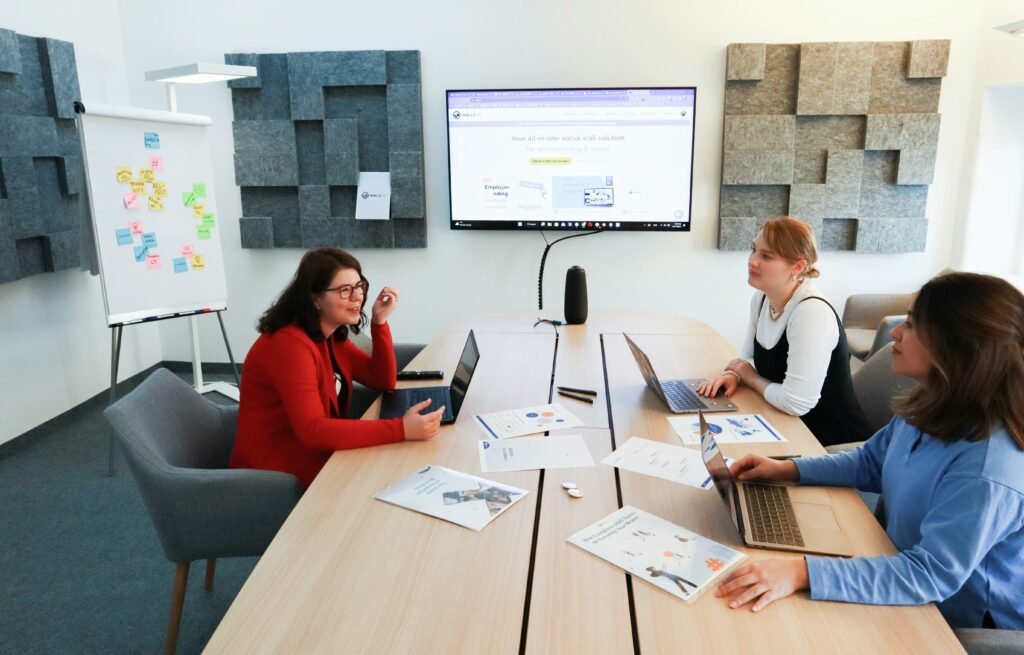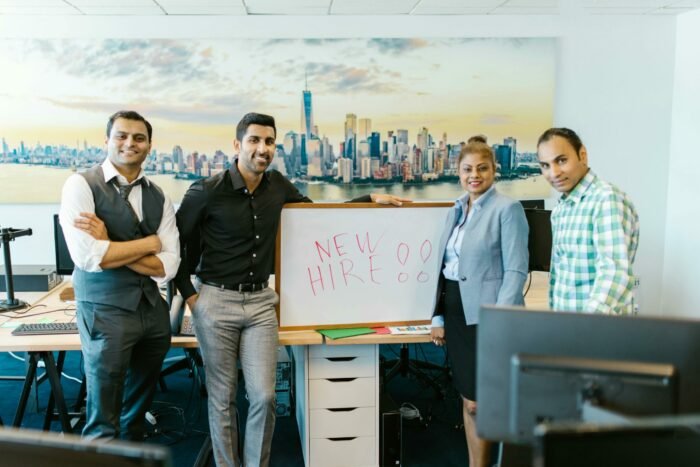In an era of rapid technological advancements and evolving business landscapes, future-proofing the workforce has become imperative for organizational success. Companies that fail to adapt and equip their employees with the necessary skills risk falling behind in the competitive market. Talent mobility planning involves strategically managing and deploying talent within an organization to meet current and future business needs effectively. It encompasses identifying skill gaps, fostering a culture of continuous learning, and aligning talent with evolving job roles. This article aims to delve into the concept of talent mobility planning, elucidating its significance in future-proofing the workforce. It will explore key components, strategies, and best practices for implementing talent mobility planning within organizations.
Key Takeaways
- Future-proofing the workforce is crucial in today’s rapidly evolving business landscape to ensure organizational success and competitiveness.
- Talent mobility planning involves strategically managing and deploying talent within an organization to meet current and future business needs effectively.
- Key components of talent mobility planning include identifying skill gaps, fostering a culture of continuous learning, and aligning talent with evolving job roles.
- The objectives of this article are to explore the concept of talent mobility planning and its significance in future-proofing the workforce, as well as to provide insights into key components, strategies, and best practices for implementation.
- Establishing a sustainable skills framework is essential, involving the identification of current and future capabilities, building a skills and competencies framework, and aligning it with job architecture.
- Integrating the skills framework with HR processes, such as recruitment, training, and performance evaluation, ensures strategic talent management and workforce planning.
- Implementing strategic workforce planning involves aligning the workforce with future business needs, leveraging predictive analytics for talent management, and embracing strategic workforce planning for organizational resilience.
- Strategies for future-proofing the workforce include equipping employees with relevant skillsets, fostering a culture of continuous learning and innovation, and attracting and retaining top talent through upskilling initiatives.
- Real-world examples and case studies highlighting organizations’ effective talent mobility strategies demonstrate the impact of talent mobility planning on organizational resilience and success.
- Embracing talent mobility planning is crucial for organizations to stay ahead of the curve and ensure long-term success in today’s dynamic business environment.
Understanding Talent Mobility Planning
Definition and Scope of Talent Mobility
Talent mobility encompasses the strategic management and deployment of employees within an organization to meet current and future business needs effectively. It involves the movement of talent across various roles, functions, and locations to optimize workforce agility and adaptability. This dynamic concept goes beyond traditional notions of job stability and linear career paths, emphasizing the importance of versatility and skill development in today’s rapidly changing business landscape.
The scope of talent mobility extends beyond mere internal transfers and promotions to include external hiring and talent acquisition strategies. It involves identifying skill gaps, fostering a culture of continuous learning, and aligning talent with evolving job roles to ensure organizational resilience and competitiveness.
Talent mobility planning plays a pivotal role in future-proofing the workforce by enabling organizations to adapt to changing business needs swiftly. It facilitates the development of a versatile workforce capable of tackling new challenges and embracing emerging opportunities. By understanding the definition and scope of talent mobility, organizations can implement effective strategies to optimize talent utilization and enhance overall organizational performance.
Link Between Talent Mobility and Future-Proofing
Talent mobility and future-proofing are essential for organizational success and resilience in today’s dynamic business environment. Talent mobility involves strategically managing and deploying talent within an organization, ensuring the right people with the right skills are in the right positions to address current and future business needs effectively. It enables organizations to adapt to changing market dynamics and technological advancements by fostering a culture of continuous learning and skill development. Talent mobility also helps address skill gaps and talent shortages by nurturing high-potential employees and promoting internal mobility. By embracing talent mobility as a core strategy, organizations can build a resilient and adaptable workforce capable of navigating uncertainty and sustaining long-term success.
Key Components of Effective Talent Mobility Strategies |
|---|
| 1. Talent Identification and Assessment |
| 2. Skill Development and Training |
| 3. Succession Planning |
| 4. Performance Management |
Let’s briefly elaborate on each component:
- Talent Identification and Assessment: This involves identifying high-potential employees and assessing their skills, competencies, and potential for advancement within the organization.
- Skill Development and Training: Providing employees with opportunities for skill development and training to enhance their capabilities and prepare them for future roles and responsibilities.
- Succession Planning: Developing a plan for identifying and grooming internal talent to fill key leadership and critical roles as they become vacant due to retirement, resignation, or promotion.
- Performance Management: Implementing a performance management system that aligns individual performance goals with organizational objectives and provides feedback and recognition to encourage employee growth and development.
These key components work together to ensure that organizations have a talent pipeline in place to meet current and future business needs effectively, fostering employee engagement, retention, and organizational resilience.
Talent Mobility: The Key to Organizational Success
Establishing a Sustainable Skills Framework
A. Identifying Current and Future Capabilities
Identifying current and future capabilities involves assessing employees’ skills and competencies to determine their readiness for future roles within the organization. This process includes conducting skills assessments, competency mapping, and gap analysis to identify areas for development. Anticipating future skill requirements and collaborating with employees on individual development plans ensures that the workforce remains adaptable and prepared for evolving business needs.
Building a Skills and Competencies Framework
Building a skills and competencies framework is crucial for talent mobility planning. This involves defining core and role-specific competencies, establishing proficiency levels, creating assessment criteria, designing training programs, outlining career progression paths, and continuously reviewing and updating the framework. It ensures that the workforce possesses the necessary capabilities to meet current and future business needs effectively.
Aligning Skills Framework with Job Architecture |
|---|
| 1. Mapping Skills to Job Roles |
| 2. Defining Job Levels |
| 3. Career Pathways |
| 4. Job Descriptions and Role Profiles |
| 5. Training and Development Plans |
| 6. Performance Evaluation Criteria |
This table outlines the key components of aligning the skills framework with job architecture. Let’s briefly elaborate on each component:
- Mapping Skills to Job Roles: Identify and map the specific skills and competencies required for each job role within the organization.
- Defining Job Levels: Define different job levels or tiers within the organizational structure based on factors such as experience, expertise, and responsibility.
- Career Pathways: Establish clear career pathways that outline the progression of skills and competencies required for advancement within the organization.
- Job Descriptions and Role Profiles: Develop comprehensive job descriptions and role profiles that articulate the skills and competencies required for each position.
- Training and Development Plans: Tailor training and development plans to address skill gaps and development opportunities identified based on job requirements.
- Performance Evaluation Criteria: Align performance evaluation criteria with the skills and competencies outlined in the framework and job architecture to assess employee performance effectively.
By aligning the skills framework with job architecture, organizations can ensure that their talent management practices are closely integrated with their organizational structure and business objectives, facilitating effective talent deployment, career development, and succession planning.
Integrating Skills Framework with HR Processes
Applying Skills Framework Analytically
Applying the skills framework analytically involves leveraging data and analytics to assess, analyze, and utilize employee skills and competencies effectively. This process enables organizations to make data-driven talent management decisions, identify skill gaps, optimize talent deployment, inform training and development initiatives, and support succession planning. By analyzing skills data, organizations can ensure that their workforce possesses the right skills to meet evolving business needs and drive organizational success.
Aligning Skills Framework with Business Strategy
Aligning the skills framework with business strategy involves ensuring that talent development efforts are strategically aligned with the organization’s goals and priorities. This includes identifying skill requirements that support business objectives, tailoring talent development initiatives accordingly, aligning recruitment and hiring practices, integrating performance management processes, and continuously monitoring and adjusting strategies to maintain alignment with evolving business needs. This strategic alignment ensures that the workforce possesses the skills and competencies needed to drive organizational success effectively.
Measuring Value and Effectiveness of Talent Mobility Planning
Assessing the value and effectiveness of talent mobility planning is vital for organizations to ensure alignment with business goals and continuous improvement. By utilizing key performance indicators (KPIs) and metrics, organizations can evaluate the success of their talent mobility initiatives.
Metrics for Measuring Talent Mobility Planning |
|---|
| 1. Employee Engagement and Satisfaction |
| 2. Talent Retention Rates |
| 3. Time-to-Fill Vacancies |
| 4. Skills Development ROI |
| 5. Promotion and Internal Mobility Rates |
- Employee Engagement and Satisfaction: Measure employee engagement and satisfaction levels to assess the effectiveness of talent mobility initiatives in fostering a positive work environment and supporting career growth.
- Talent Retention Rates: Track talent retention rates to gauge the success of talent mobility planning in retaining high-potential employees and reducing turnover.
- Time-to-Fill Vacancies: Evaluate the efficiency of talent mobility planning by analyzing the time taken to fill vacant positions within the organization.
- Skills Development ROI: Calculate the return on investment (ROI) of skills development programs to assess their effectiveness in enhancing employee skills and competencies.
- Promotion and Internal Mobility Rates: Monitor promotion and internal mobility rates to measure the success of talent mobility planning in facilitating career advancement opportunities within the organization.
By measuring these metrics, organizations can gain insights into the value and effectiveness of their talent mobility planning efforts, allowing for informed decision-making and continuous improvement.
Implementing Strategic Workforce Planning
Aligning Workforce with Future Business Needs
Aligning the workforce with future business needs involves assessing current skills, forecasting future requirements, and implementing strategic initiatives for talent development and deployment. This process includes skills assessment, future skills forecasting, strategic workforce planning, talent development, recruitment aligned with future needs, agile talent deployment, and continuous monitoring for adjustments. It ensures that the workforce remains adaptable and equipped to support evolving business objectives effectively.
Leveraging Predictive Analytics for Talent Management
Leveraging predictive analytics for talent management involves utilizing data-driven insights to make informed decisions about workforce planning, recruitment, retention, and development. By analyzing historical data and identifying patterns, organizations can forecast future talent needs, anticipate turnover, and optimize strategies for attracting, retaining, and developing talent effectively. Predictive analytics enables organizations to proactively address talent challenges, identify high-potential employees, and align talent management practices with business objectives, ultimately driving organizational success and competitiveness.
Embracing Strategic Workforce Planning for Resilience
Embracing strategic workforce planning for resilience involves taking a proactive and holistic approach to managing the organization’s workforce to ensure agility, adaptability, and continuity in the face of changing business environments and uncertainties. Strategic workforce planning aligns talent management strategies with organizational goals, anticipates future talent needs, and identifies potential risks and opportunities to build a resilient workforce. By analyzing workforce demographics, skill gaps, succession plans, and talent development initiatives, organizations can identify areas for improvement, mitigate risks, and capitalize on opportunities to enhance organizational resilience. Strategic workforce planning enables organizations to effectively navigate uncertainties, respond to market changes, and maintain a competitive edge in dynamic business landscapes.
Strategies for Future-Proofing Your Workforce
Equipping Workforce with Relevant Skill Sets
Equipping the workforce with relevant skill sets involves identifying the skills and competencies needed to support organizational goals and providing employees with opportunities for learning and development to acquire these skills. This process encompasses assessing current skill gaps, forecasting future skill requirements, and implementing targeted training and development programs to address these gaps. By ensuring that employees possess the necessary skills to perform their roles effectively and adapt to changing business needs, organizations can enhance productivity, innovation, and overall performance, ultimately driving long-term success and competitiveness.
Creating a Culture of Continuous Learning and Innovation
Creating a culture of continuous learning and innovation involves fostering an environment where employees are encouraged and supported to pursue ongoing learning, experimentation, and creativity to drive organizational growth and success. This includes promoting a growth mindset that values learning from both successes and failures, providing access to resources and opportunities for professional development, and recognizing and rewarding innovation and initiative. By cultivating a culture that prioritizes continuous learning and embraces innovation, organizations can empower employees to adapt to change, explore new ideas, and drive meaningful progress, ultimately fostering a culture of resilience and competitive advantage.
Attracting and Retaining Top Talent through Upskilling
Attracting and retaining top talent through upskilling involves implementing strategies to attract high-caliber professionals to the organization and retaining them by offering opportunities for continuous skill development and advancement. This approach includes offering competitive compensation and benefits packages, showcasing a commitment to employee growth and development, and providing access to upskilling programs and career advancement opportunities. By investing in the professional growth of employees and offering avenues for acquiring new skills and advancing their careers within the organization, companies can attract top talent and foster a culture of loyalty and long-term commitment among their workforce, ultimately enhancing organizational performance and competitiveness.
Case Studies and Success Stories
Examples of Organizations Implementing Effective Talent Mobility Strategies
These organizations exemplify effective talent mobility strategies:
- IBM: Offers “My Career@IBM” program focusing on internal mobility for skill diversification and career advancement.
- Google: Promotes internal mobility with transparent job postings, emphasizing continuous learning and skill development.
- GE (General Electric): Implements programs like “Global Leadership Program” for cross-functional experience and talent grooming.
- Salesforce: Facilitates talent mobility through career development resources and encourages employees to pursue career aspirations within the company.
- Microsoft: Operates “Microsoft Career Center” for internal mobility, providing coaching and skill development opportunities.
Each organization prioritizes talent mobility, fostering employee growth, engagement, and retention through internal career development opportunities.
Impact of Talent Mobility Planning on Organizational Resilience and Success
Talent mobility planning significantly impacts organizational resilience and success by fostering adaptability, succession planning, employee engagement, innovation, and maintaining a competitive advantage. It ensures a flexible workforce capable of responding to change, mitigates risks associated with turnover, enhances employee satisfaction and retention, drives innovation through collaboration, and provides a competitive edge in the market. Overall, effective talent mobility strategies enable companies to navigate challenges, capitalize on opportunities, and achieve long-term success.
Conclusion
Talent mobility planning is a critical strategy for future-proofing the workforce and ensuring organizational success in today’s dynamic business environment. By aligning workforce capabilities with future business needs, organizations can cultivate a resilient and adaptable workforce capable of driving innovation, responding to market changes, and sustaining long-term growth.
Throughout this article, we’ve explored the importance of talent mobility planning and its key components, including understanding talent mobility, establishing skills frameworks, integrating with HR processes, implementing strategic workforce planning, and fostering a culture of continuous learning and innovation. We’ve also highlighted the impact of talent mobility planning on organizational resilience and success, emphasizing its role in promoting adaptability, agility, employee engagement, and innovation.
Through real-world examples and case studies, we’ve seen how organizations like IBM, Google, GE, Salesforce, and Microsoft have successfully implemented talent mobility strategies to enhance employee development, engagement, and retention, ultimately driving organizational performance and competitiveness.
In today’s rapidly evolving business landscape, embracing talent mobility planning is not just a strategic imperative but a necessity for organizations seeking to thrive in the face of uncertainty and change. By prioritizing talent mobility and investing in employee development, organizations can build a resilient workforce capable of navigating challenges, seizing opportunities, and achieving sustainable growth in the years to come.
We urge organizations to embrace talent mobility planning as a core organizational strategy and commit to investing in the development and growth of their workforce to ensure future success and resilience in an ever-changing business landscape.











